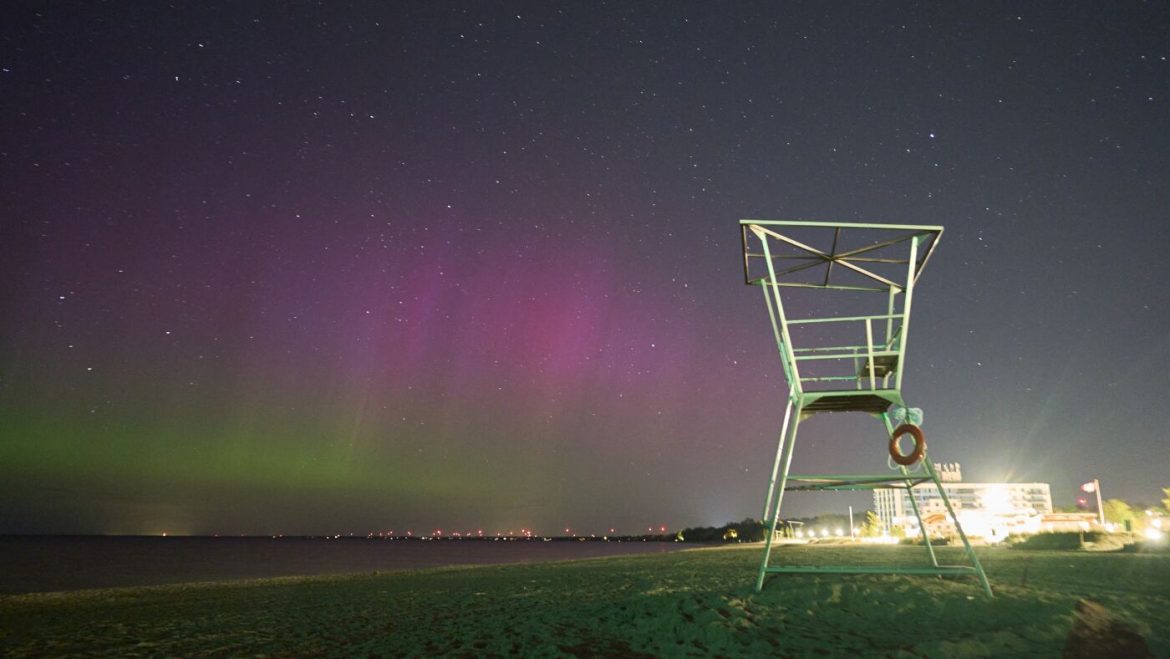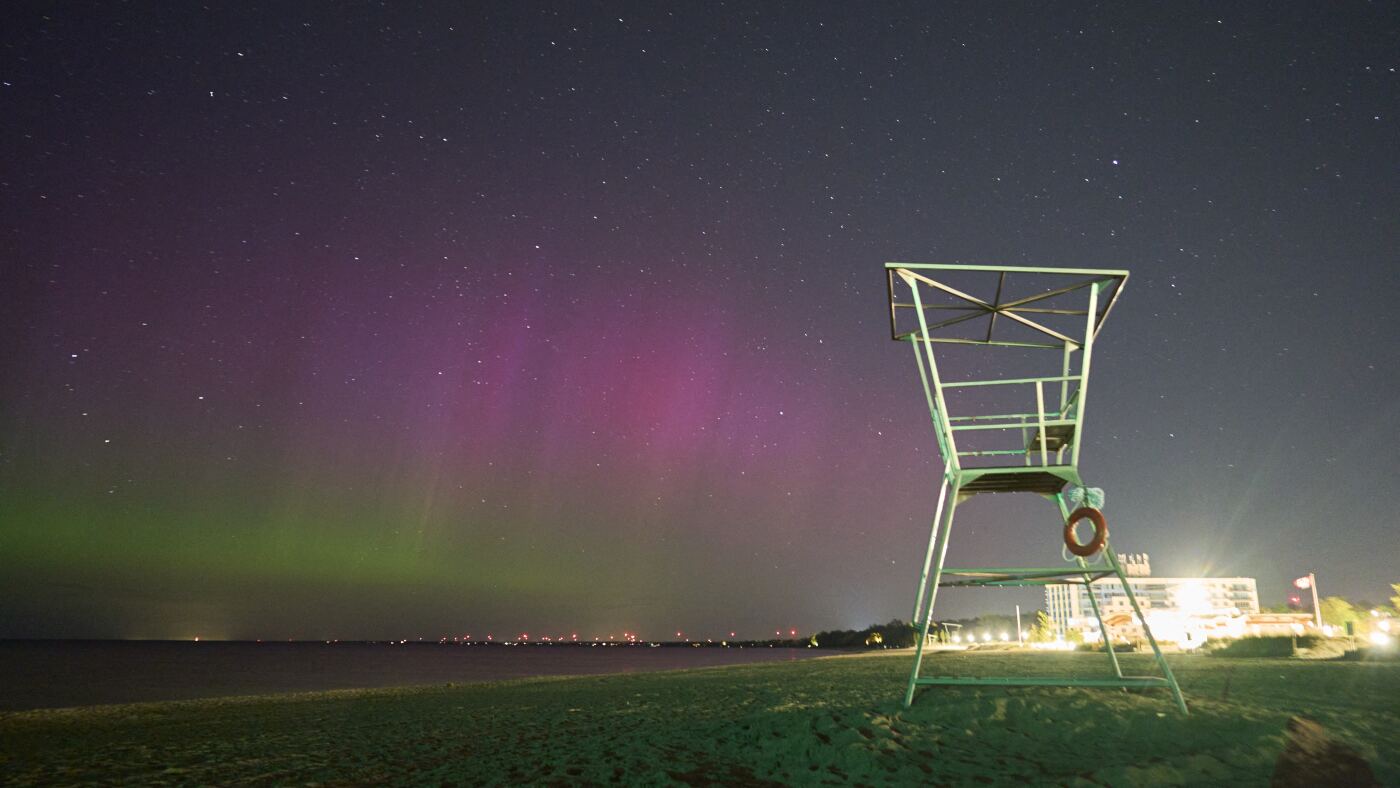A Spectacular Celestial Event: Northern Lights Across Much of the U.S.
A powerful geomagnetic storm is set to illuminate the skies across a broad swath of the United States, offering many Americans the rare opportunity to witness the majestic display of the northern lights, or aurora borealis, far beyond their usual northern habitats. This natural spectacle, driven by intense solar activity, is not only a visual marvel but also carries implications for technology and infrastructure.
—
Understanding the Geomagnetic Storm Behind the Aurora
At the heart of this event lies a significant geomagnetic storm, catalyzed by a coronal mass ejection (CME)—a massive burst of solar plasma and magnetic fields expelled from the sun’s surface. When this cloud of charged particles reaches Earth, it interacts with the planet’s magnetic field, energizing atoms in the upper atmosphere to create vivid, dancing lights typically visible in polar regions.
Currently, federal agencies such as the National Oceanic and Atmospheric Administration (NOAA) and its Space Weather Prediction Center (SWPC) have assigned a geomagnetic storm watch of level G4 (severe) or G3 (strong), on a five-point scale where G5 is the most extreme. This indicates a high likelihood of significant geomagnetic activity.
—
What the Geomagnetic Storm Means for Visibility of the Northern Lights
What makes this storm exceptional is its potential to expand the reach of the auroras to notably southern latitudes. Normally confined to areas closer to the poles, the aurora has been forecast to appear over much of the northern half of the contiguous U.S., with sightings possible as far south as northern California on the west coast and Alabama in the southeast.
States such as Alaska and Pennsylvania, along with parts of South Dakota, Wisconsin, Maine, New York, and even some Mid-Atlantic regions, are expected to have favorable viewing conditions. In some cases, auroras have even been captured on sensitive cameras in areas where the lights are too faint for the naked eye, underscoring the event’s extent.
This is reminiscent of past extraordinary solar storms, such as the one in May 2024 that pushed auroras as far south as Florida and the Caribbean or the severe 1989 event that caused widespread power outages in Montreal and affected parts of the northeastern U.S. and Sweden.
—
Temporal Aspect: When to Look Up
The northern lights display is expected to peak Sunday night into early Monday morning, offering a two-night window for optimal viewing. Timing is crucial because the strongest geomagnetic activity—and thus the brightest auroras—typically occur after the CME’s arrival at Earth’s magnetosphere, interacting with the atmosphere during nighttime in the affected regions.
In some reports, the aurora was already visible in the eastern U.S. on Thursday preceding the expected surge, but the main event remains Sunday night. Cloud cover and local light pollution can affect visibility, so the clearest, darkest skies away from city lights will provide the best experience.
—
Potential Impacts Beyond the Sky Show
While the auroral spectacle delights many, the geomagnetic storm also poses risks. Disruptions to power grids, satellite operations, and radio communications are possible, particularly with G4 or potentially G5-class storms. Past incidents demonstrate that intense solar storms can damage transformers and cause widespread blackouts, as well as interfere with GPS and other critical technologies.
As an example, the 1989 storm led to a nine-hour blackout affecting 6 million people in Montreal. Current warnings suggest that utilities and satellite operators remain on alert to mitigate damage from the incoming storm. The transient disturbances to high-frequency radio signals can affect aviation and maritime navigation.
—
Geographic Reach and Viewing Recommendations
This rare combination of solar strength and geomagnetic consequences puts at least 17 U.S. states in a prime position to see the northern lights. From the West Coast (northern California, Washington) to the East (Pennsylvania, New York, Maine), and southward through Alabama and possibly beyond, a large portions of the nation could witness the incredible glow.
To maximize chances of a successful viewing:
– Find locations with minimal light pollution.
– Monitor local weather forecasts for clear skies.
– Watch just after local midnight into early morning hours.
– Use aurora forecast tools and alerts for real-time updates.
Photographers and enthusiasts are already preparing to capture the event, which promises breathtaking displays of green, purple, and pink hues streaking across the night sky.
—
Conclusion: A Rare and Awe-Inspiring Union of Solar Forces and Earth’s Atmosphere
The impending geomagnetic storm marks a powerful reminder of the dynamic relationship between the sun and our planet. Beyond the technological vigilance it demands, it offers a spectacular, once-in-a-lifetime show for millions across the U.S., as the northern lights spread far wider than usual. This fusion of science and natural beauty illuminates not only the night but also our ever-evolving understanding of space weather and its earthly impacts.
For those in the right place at the right time this Sunday night, the skies will become a canvas painted by cosmic forces, a sight both humbling and inspiring.


